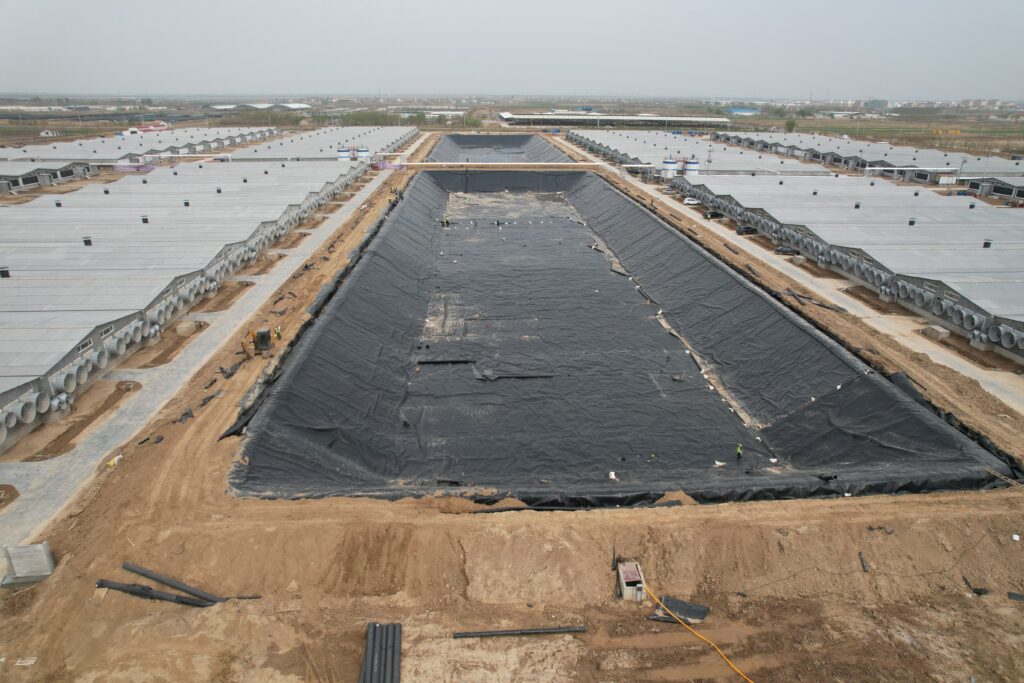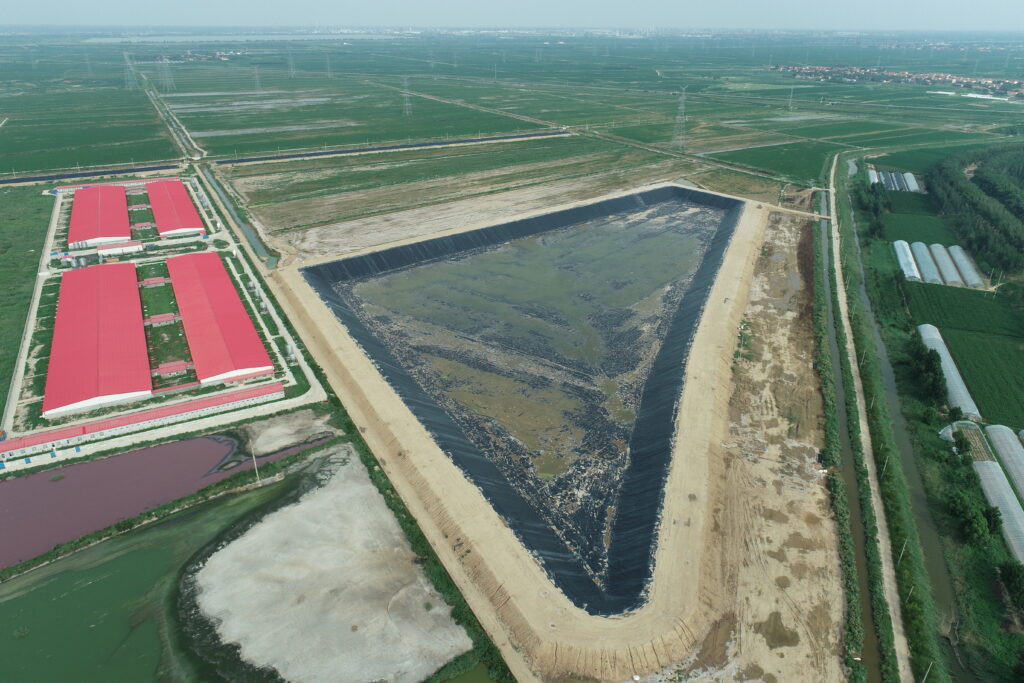Why does tailings pond project need geomembrane?
In the construction of tailings ponds, it is usually necessary to consider the use of geomembranes to meet specific environmental and protection requirements. The following are some common situations where geomembranes may need to be applied to tailings storage:
Anti-seepage barrier: Tailings contain hazardous substances and chemicals that can contaminate the environment and ecosystem if they seep into groundwater or surrounding soil. The geomembrane acts as an anti-seepage barrier on the bottom and side walls of the tailings pond, which can prevent the penetration of harmful substances and reduce the risk of leakage.
Soil protection and separation: The bottom and side walls of the tailings pond are composed of original soil and accumulated soil. Geomembranes can be used to protect the soil, prevent harmful substances from eroding the soil, and mix between different soil layers. It can provide soil separation and protection, ensuring the stability of the tailings pond structure and the safety of the environment.
Protection against bottom infiltration: The bottom of a tailings pond may come into contact with groundwater or bodies of water, and without proper protection, the bottom may be affected by infiltration. The geomembrane can act as an anti-seepage barrier, forming a sealed layer at the bottom of the tailings pond, preventing the infiltration of water and the release of harmful substances.
Water barriers and protective layers: Geological conditions and environmental requirements around tailings ponds may require water barriers and protective layers. Geomembrane can be used as a key layer in the water barrier to ensure the operation of the tailings pond and the protection of the surrounding environment.
It should be pointed out that the use of geomembrane is not a general requirement in the design and construction of tailings ponds, but is determined according to specific engineering requirements and environmental assessment. The design and construction of tailings ponds should follow relevant regulations and standards, and rely on detailed engineering planning and evaluation. In actual operation, professional environmental engineers, civil engineers and hydraulic engineers will provide guidance to ensure the correct application of the appropriate geomembrane type, specification and installation method.

How to install geomembrane for tailings pond?
Preparation:
According to the design requirements and geological survey results, determine the required geomembrane type, specification and quantity.
Clean the bottom and side wall surfaces of the tailings pond to ensure a smooth surface and remove loose and sharp objects.
Determine the laying direction and position of the geomembrane according to the design requirements, and mark the boundary lines and fixed points.
Laying geomembrane:
Place the geomembrane roll on the laying position and gradually unroll it to ensure that the geomembrane covers the entire bottom and side walls of the tailings pond and extends far enough beyond the fixed edge of the geomembrane.
Make sure that the geomembrane has no obvious wrinkles and voids during laying. If damage is found, repair materials can be used to repair it.
Fixed geomembrane:
Fix the geomembrane on the bottom and side walls of the tailings pond with fixings (such as U-shaped anchors, interface plates or nails). The fixed spacing and method should be determined according to the design requirements and the characteristics of the geomembrane.
The fixing parts should be properly distributed, usually fixed at the edge and central part of the geomembrane to ensure the stability of the geomembrane.
Join and cover edges:
If necessary, the geomembrane can be connected by hot-melt connection or special connection material. Make sure the connections are tight and adequately sealed to prevent water penetration.
Around the edges of the geomembrane, a covering treatment is performed. Filling, such as earthfill, is usually used to cover and secure the edges of the geomembrane.

Check and fix:
After the geomembrane is laid, a comprehensive inspection is carried out to ensure the integrity of the geomembrane and no damaged parts.
If any damage or problem is found, repair it in time, and ensure that the repaired part is tightly bonded to the surrounding geomembrane.
Please note that the method of geomembrane installation for tailings ponds may vary due to factors such as project requirements, material type, and environmental conditions. Therefore, during the construction process, it is recommended to cooperate with professional engineers, construction teams or relevant technical personnel, and follow relevant technical specifications and suggestions. They can provide detailed guidance on a case-by-case basis to ensure proper installation and performance of the geomembrane as expected.

